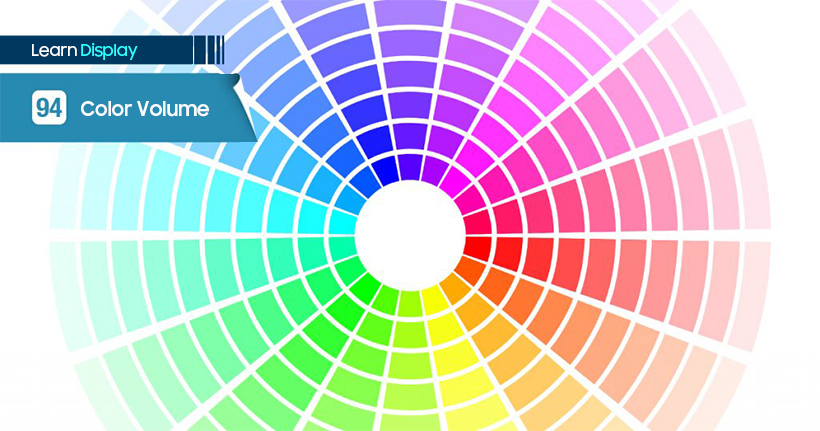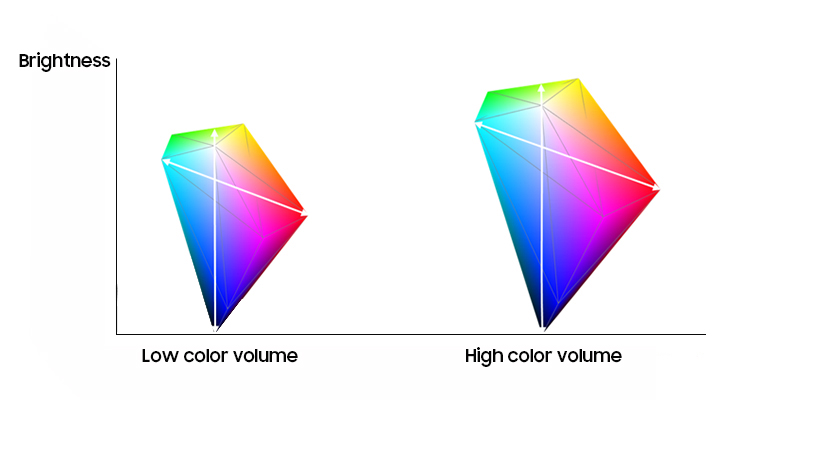
Color volume is a three-dimensional indicator that measures the change in color depending on the brightness of a display.
Accurate reproduction of colors by a display can be likened to painting a picture with a wide variety of colors. Therefore, wider the range of colors that the display pixels can reproduce, closer the images will be to reality.

Generally, the range of light and colors visible to the human eye (visible spectrum) is indicated in the diagram as illustrated above (CIE 1931). Within this space, the range of colors that can be reproduced by a display is indicated in percentage. Greater the area of colors reproduced, better the color reproduction of a display is. However, the actual range of colors that can be reproduced by a display is dependent on its brightness. On a darker screen, color reproduction is significantly reduced compared to when the screen is bright. In other words, a two-dimensional graph does not properly represent the change in color reproduction based on display brightness. As an accurate measure of color reproduction, depending on the level of display brightness, color volume is used.

Color volume is three-dimensional, as can be seen in the illustration above. Looking like a rainbow-colored rock, the color volume diagram demonstrates the color space that a display can reproduce depending on its brightness. The cross-section can be seen as the color reproduction at different levels of brightness. As the color volume expands in all directions, the range of colors that can be reproduced also increases. Therefore, a display with a higher color volume can reproduce colors that are closer to reality. With the emergence of high dynamic range (HDR) technology, where brightness is particularly important, color volume is attracting more attention as an indicator for broader and more accurate color reproduction at a higher level of brightness.



